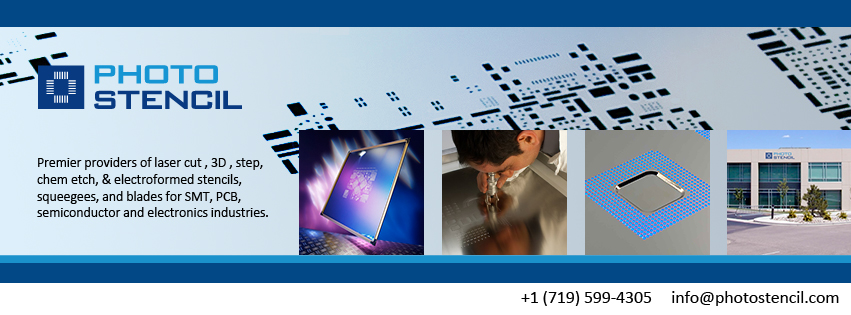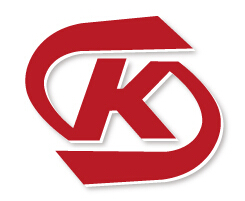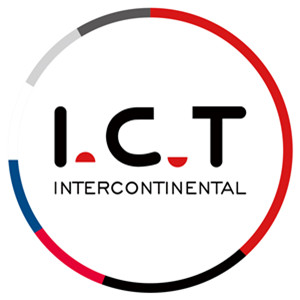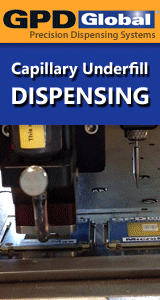Electronics Manufacturing Technical Articles
Papers and articles related to SMT, PCB & EMS industry.
- SMTnet
- »
- Technical Library
1826 SMT / PCB Assembly Related Technical Articles

Photo Stencil provides high-performance stencils, squeegee blades, thick film and metal mask screens and tooling for the surface mount technology (SMT) assembly, solar, and semiconductor industries.
Colorado Springs, Colorado, USA

Photo Stencil provides high-performance stencils, squeegee blades, thick film and metal mask screens and tooling for the surface mount technology (SMT) assembly, solar, and semiconductor industries.
Colorado Springs, Colorado, USA

DONGGUAN KINGSUN AUTOMATION TECHNOLOGY CO.,LTD

DONGGUAN KINGSUN AUTOMATION TECHNOLOGY CO.,LTD is a company which mainly provide used and new SMT parts, provide repair SMT key parts service,new/used SMT machine trading,SMT consumables and Peripherals equipment,Clean room, ESD..
Dongguan, China
Consultant / Service Provider, Distributor, Equipment Dealer / Broker / Auctions, Manufacturer, Manufacturer's Representative

I.C.T ( Dongguan ICT Technology Co., Ltd. )

I.C.T is a manufacturer from China that offers SMT, DIP, PCBA conformal coating equipment and turnkey solution.
Dongguan, Guangdong, China
The University of Washington is a public research university in Seattle, Washington. Founded on November 4, 1861, as Territorial University, Washington is one of the oldest universities on the West Coast; it was established in Sea
Seattle, Washington, USA
Clemson University is a public land-grant research university in Clemson, South Carolina. Founded in 1889, Clemson is the second-largest university by enrollment in South Carolina.
Clemson, South Carolina, USA

Isola a global material sciences company focused on designing, developing, manufacturing and marketing copper-clad laminates and dielectric prepregs used to fabricate advanced multilayer PCBs.
Chandler, Arizona, USA
World Leader in Measurement Technology
West Chester, Pennsylvania, USA

The globally leading provider of high precision cleaning products, services and training solutions in the electronics and semiconductor manufacturing industries.
Manassas, Virginia, USA
Consultant / Service Provider, Manufacturer, Training Provider

Conformal Coating Service Provider; Parylene Conformal Coating
Johnstown, Pennsylvania, USA
Pages: 1 2 3 4 5 6 7 8 9 10 11 12 13 14 15 16 17 18 19 20 21 22 23 24 25 26 27 28 29 30 31 32 33 34 35 36 37 38 39 40 41 42 43 44 45 46 47 48 49 50 51 52 53 54 55 56 57 58 59 60 61 62 63 64 65 66 67 68 69 70 71 72 73 74 75 76 77 78 79 80 81 82 83 84 85 86 87 88 89 90 91 92 93 94 95 96 97 98 99 100 101 102 103 104 105 106 107 108 109 110 111 112 113 114 115 116 117 118 119 120 121 122 123 124 125 126 127 128 129 130 131 132 133 134 135 136 137 138 139 140 141 142 143 144 145 146 147 148 149 150 151 152 153 154 155 156 157 158 159 160 161 162 163 164 165 166 167 168 169 170 171 172 173 174 175 176 177 178 179 180 181 182 183








